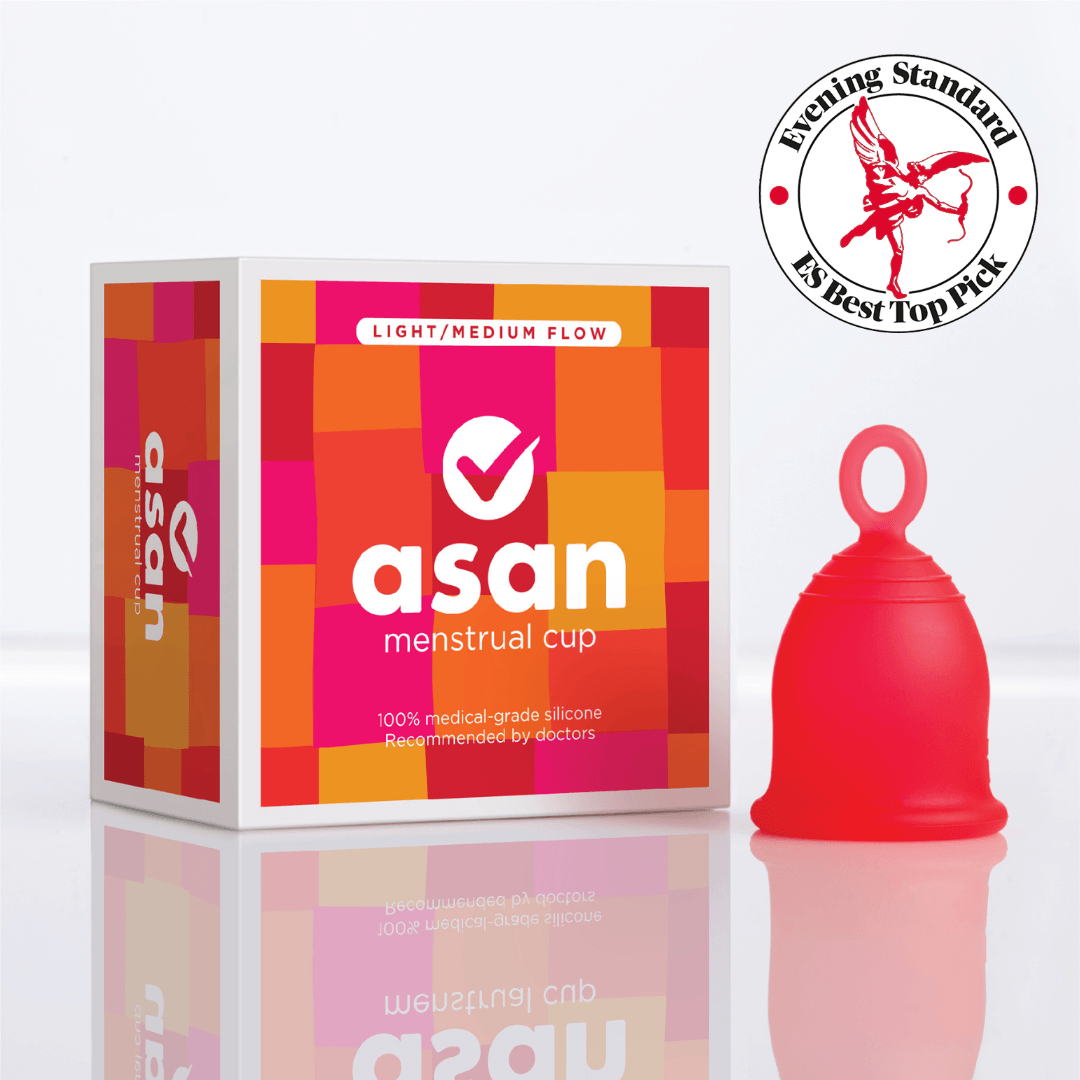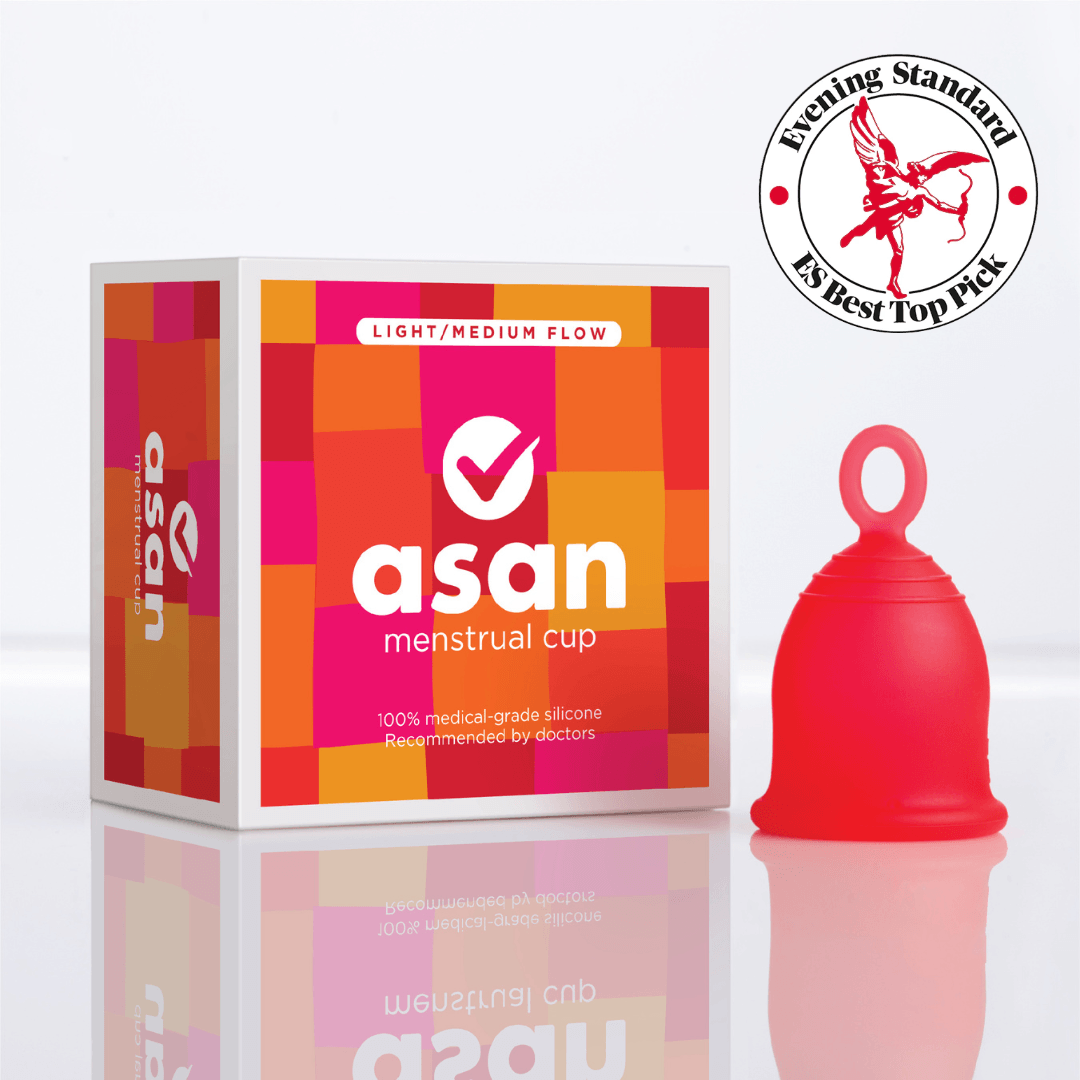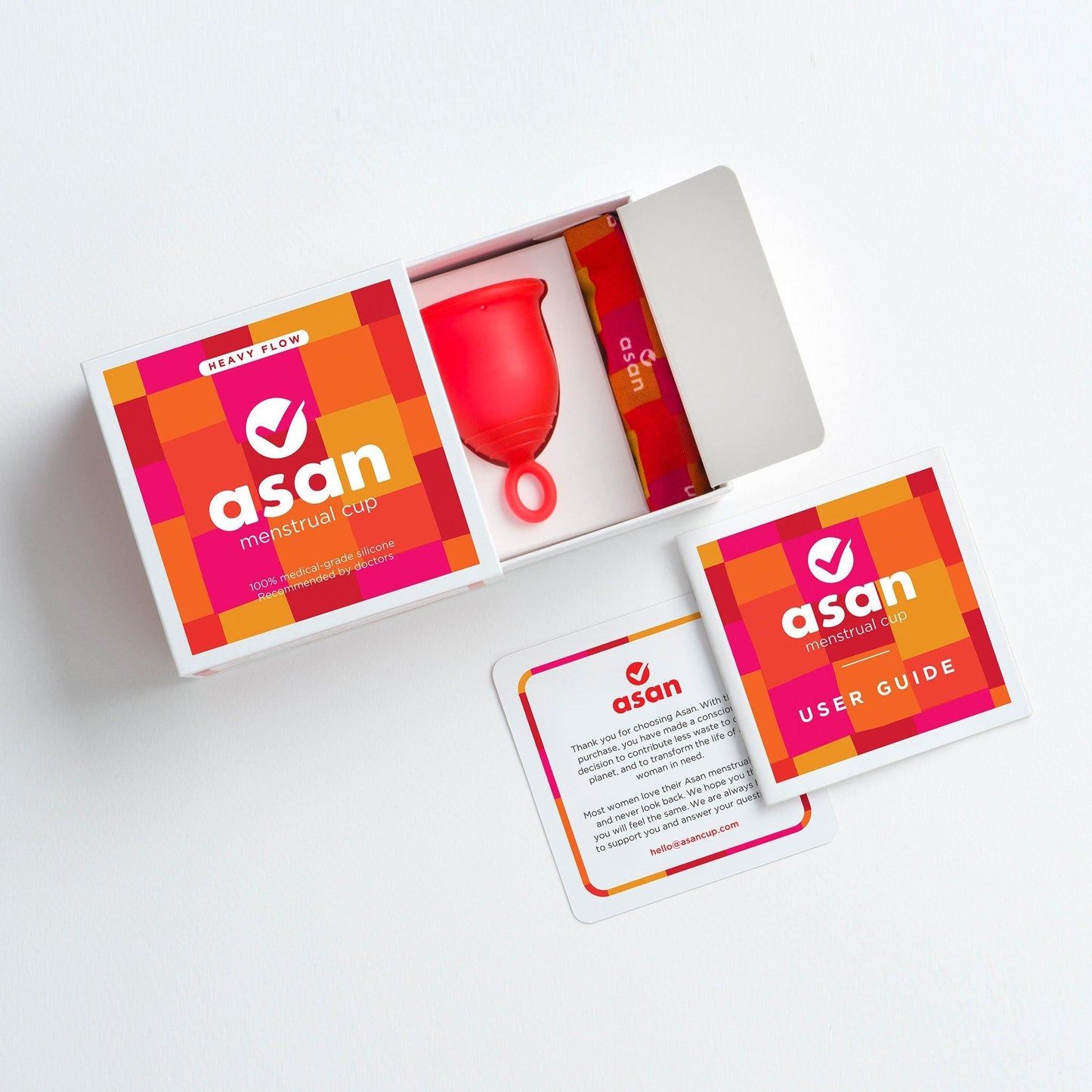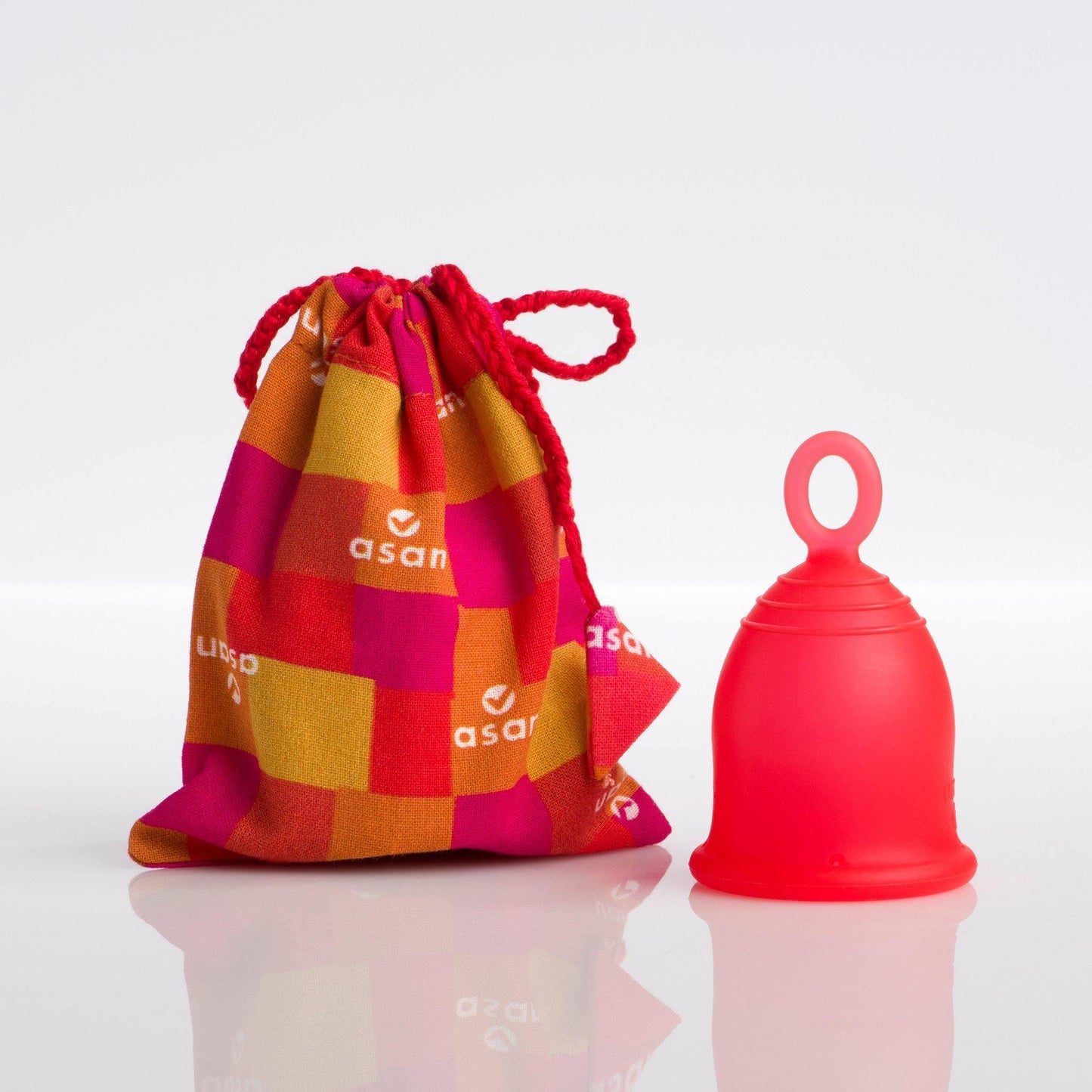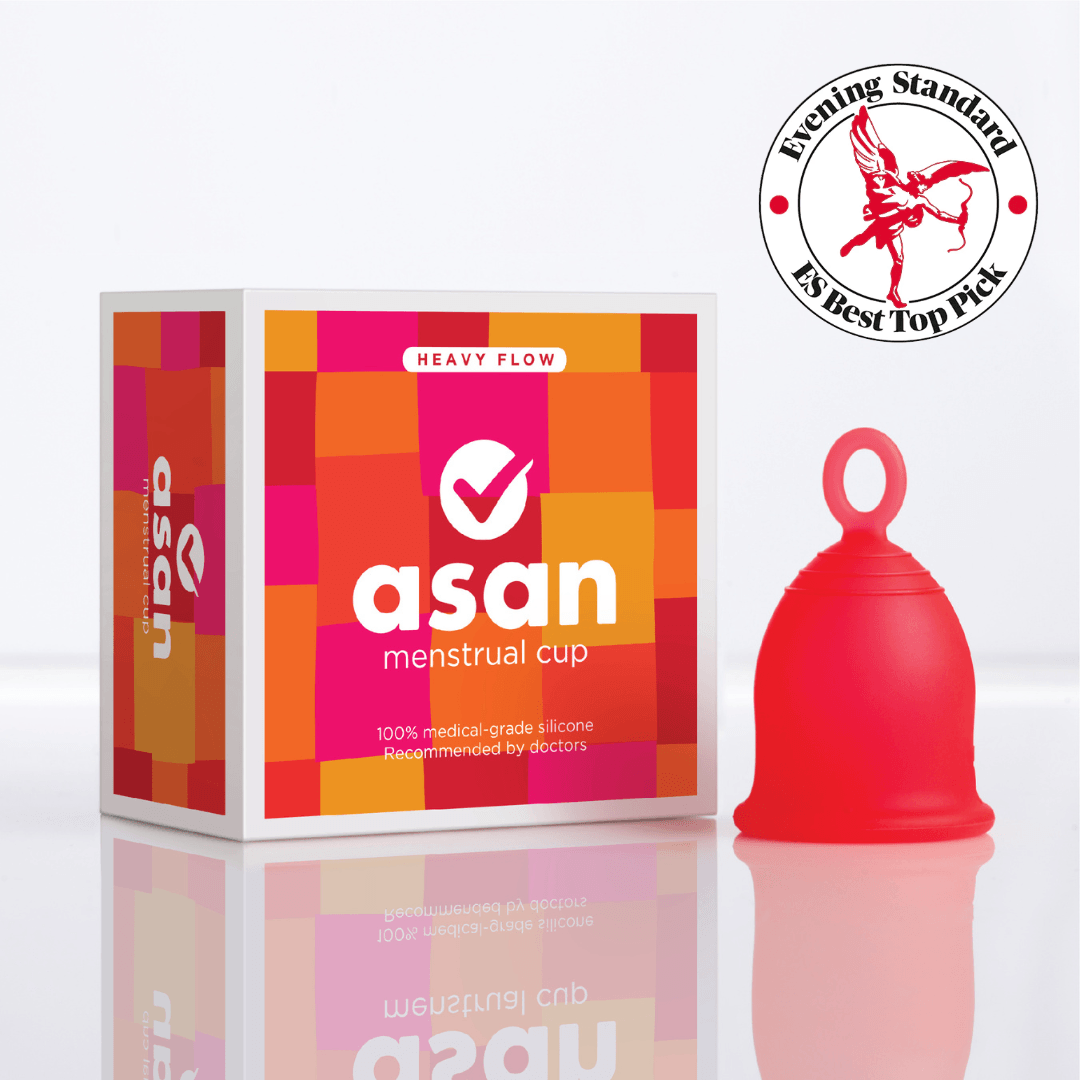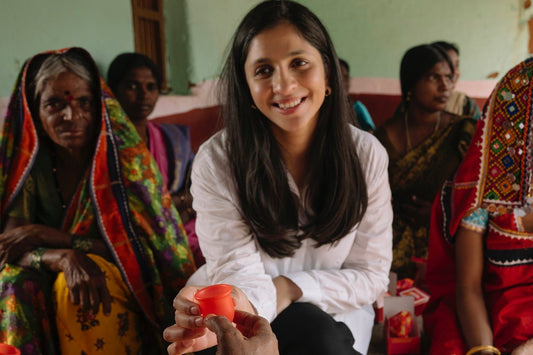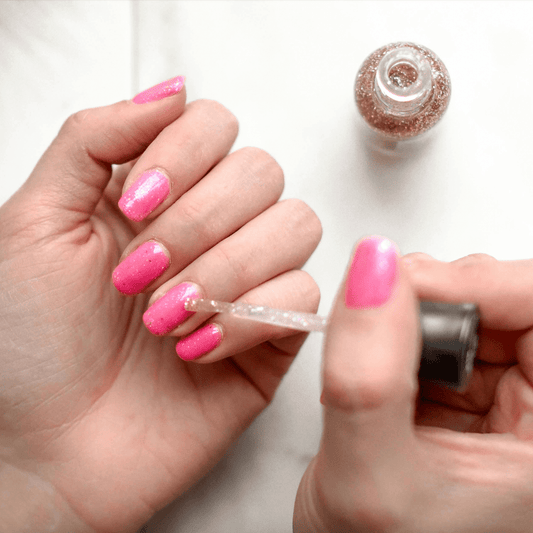 The Asan cup is not your average menstrual cup.
The Asan cup is not your average menstrual cup.
In fact, it took two years of intense research and development to perfect the design of our cup.
We have a US patent for our special ring design, and were also given the award for #1 best menstrual cup design by the UK’s Evening Standard magazine!
In this blog, we’re going to do something that we’ve never done before—which is to take you through the journey of how we engineered the Asan menstrual cup.
From the initial research, to prototyping and testing, to actually creating the final design—we’ll walk you through every step involved in developing a new product from scratch!
how did the idea for the Asan cup come about?
The idea for the Asan cup came from our founder Ira Guha, while she was a graduate student at Harvard’s Kennedy School.
Ira had seen first-hand the impact of period poverty on her community in Karnataka, South India – lack of access to safe period care meant that women were missing out on essential activities such as going to work.
Ira wanted to work on a sustainable solution to this problem. As a cup user herself, she knew that silicone menstrual cups (while super affordable and eco-friendly) were tricky to insert and remove.
 This is why she set out to design more user-friendly menstrual cups that would be suitable for people of all ages, and from all backgrounds.
This is why she set out to design more user-friendly menstrual cups that would be suitable for people of all ages, and from all backgrounds.
who designed the Asan cup?
Ira worked with Daniela Teran, a former architect and graduate student of engineering and design, to develop the design for the cup.
They worked together at the Harvard Innovation Lab (i-lab), which is Harvard’s hub for entrepreneurial projects. It provides access to innovation tools such as 3D printers, which is especially helpful for designing physical products!
why focus on an eco-friendly period solution?
From the start, our team knew we wanted to focus on environmentally-safe period care.
This is because of the enormous plastic waste crisis we’re currently facing due to disposable sanitary pads and tampons, which take over 500 years to biodegrade. Period product sustainability is therefore extremely important as access to period care expands.
 We knew there had to be a way for safe menstrual hygiene to be both affordable and accessible to everyone, while also being good for our planet.
We knew there had to be a way for safe menstrual hygiene to be both affordable and accessible to everyone, while also being good for our planet.
Reusable menstrual options such as cups had been around for a while, but their designs had not been innovated on, which is why we made the Asan cup!
what was the research process like?
The research process involved purchasing several high-quality menstrual cups from different brands and giving them to testers to try out and give feedback.
 We had a group of 20 women across the US, UK and India who provided us with feedback on existing menstrual cup designs. We asked them to make notes on menstrual cup usability, so we could understand how easy or difficult existing cups were to use.
We had a group of 20 women across the US, UK and India who provided us with feedback on existing menstrual cup designs. We asked them to make notes on menstrual cup usability, so we could understand how easy or difficult existing cups were to use.
Through the process, the women shared difficulties they had with insertion, removal, sizing, and leaks, which helped us brainstorm possible ways to prevent these problems.
In order to create the best product possible, we also consulted multiple gynaecologists, especially to understand how menstrual cup sizing should work.
This is because one of the persistent problems we found was that while most menstrual cup brands designed their sizing based on cervix height, age, and whether or not you’ve given vaginal birth, these weren’t accurate or inclusive.
Through the feedback we received, we designed a new sizing guide simply based on your period flow.
why does the Asan cup have a ring? what else is different about it?
The very first idea Ira had when it came to period cup innovation was to add a removal ring or loop.
Most cups have a little removal stem (shaped like a stick) at the bottom. However, there are two problems with this – firstly, the stems are very hard to grip onto, especially when they get slippery! This means cups with stems can be very difficult to locate and remove once they are inside the vagina.
Secondly, stems tend to poke the sides of your vaginal canal, which can be really uncomfortable!
 Asan’s removal ring solves both these problems. The loop shape makes it extremely easy to grip onto (just slide two fingers inside the ring!) and since it has no sharp edges, it doesn’t poke or hurt the vagina in any way.
Asan’s removal ring solves both these problems. The loop shape makes it extremely easy to grip onto (just slide two fingers inside the ring!) and since it has no sharp edges, it doesn’t poke or hurt the vagina in any way.
In addition to the removal loop, the Asan cup is bell-shaped, which means it sits very comfortably in the vagina (unlike V-shaped cups which can sometimes be uncomfortable or leak).
The cup comes in two sizes – one for light flow (slightly softer and smaller) and one for heavy flow (slightly larger and firmer). This is because through our research, we learned that people with heavy flow needed a firmer cup that would stay in place to prevent leaks.
Finally, another difference is that the Asan cup is bright red, which means it doesn’t stain or discolour over time!
how did the cup go from a drawing to a physical product?
The first step was to create 2D drawings of possible menstrual cup designs.
 After this, we used Rhino, a CAD modelling software to create a digital 3D rendering of our cup designs. Daniela (our engineer) was hugely helpful here as she’s a former architect and is therefore a pro at using modelling software!
After this, we used Rhino, a CAD modelling software to create a digital 3D rendering of our cup designs. Daniela (our engineer) was hugely helpful here as she’s a former architect and is therefore a pro at using modelling software!
Once we had our 3D designs, we used 3D printers at the Harvard i-Lab to create physical prototypes.
This was an incredible process—watching the cups get made layer by layer (there were several late nights, as we often had to pick up our prototypes after 1am to give other people access to the printers!)
Although the 3D printed-prototypes looked like real menstrual cups, we couldn’t actually test them out, since they were made of a synthetic resin that can’t be inserted into the vagina!
 Once we selected the best versions of our 3D printed designs, we worked with a professional manufacturer to create prototypes from medical grade silicone – which could actually be tested out by our user group.
Once we selected the best versions of our 3D printed designs, we worked with a professional manufacturer to create prototypes from medical grade silicone – which could actually be tested out by our user group.
Once we were extremely happy with our final design, we moved onto large-scale menstrual cup production, which is where we are today!
how many ‘versions’ of the Asan cup were there in total?
In total, we had four different versions before we settled on the final design of the Asan cup.
 We asked our user group of 20 women to test each version and give us detailed feedback and notes. We then iterated on the design and improved it each time.
We asked our user group of 20 women to test each version and give us detailed feedback and notes. We then iterated on the design and improved it each time.
Our removal ring was initially a long, thin oval shape, but some users found it difficult to grip onto, so we changed it to a rounder oval.
We also tested various versions of thickness and firmness for our cup—as these two factors can really influence (1) how easy the cup is to insert, (2) how comfortable the cup is in the vagina, and (3) whether the cup leaks!
In general, thinner cups are easier to insert, but firmer cups are much less likely to leak. We had to reach a compromise, which means the Asan cup is of medium firmness.
You might find it a bit firmer than some flimsier cups, but this means that it is a highly durable menstrual cup that is much less likely to leak.
what about safety and quality? how did that part work?
Safety and quality were extremely important to us from the very beginning of the design process.
We consulted a silicone expert about menstrual cup materials. He explained to us the difference between different silicones (such as medical grade and food grade). For our cup, we decided to use USP Class VI which is the highest grade of silicone. It is the best material for biocompatible menstrual cups.
We decided to test each batch of Asan cups for biocompatibility with an independent lab just to ensure that every single batch we manufacture is 100% safe to use.
what’s next for Asan?
As a manufacturer of eco-conscious period products, Asan is always looking to drive menstrual health advancements, and to offer more affordable, sustainable, and comfortable menstrual solutions.
We probably won’t ever sell pads and tampons, since we focus on sustainable menstrual products, but we are working on a range of innovative new products for you!
 Our OneDrop menstrual cup cleanser, which sanitises the cup with just one drop, is another great example of research and innovation from our team.
Our OneDrop menstrual cup cleanser, which sanitises the cup with just one drop, is another great example of research and innovation from our team.
Follow us on Instagram to be the first to know about our period care innovations!
